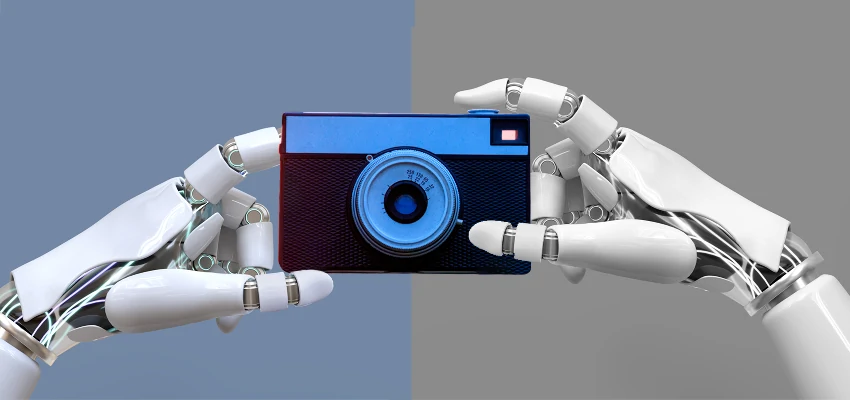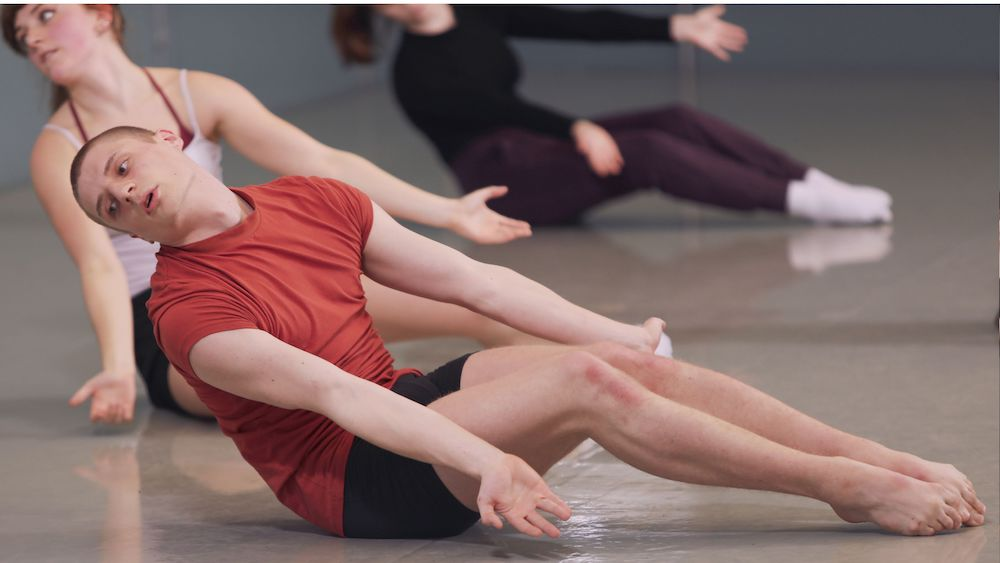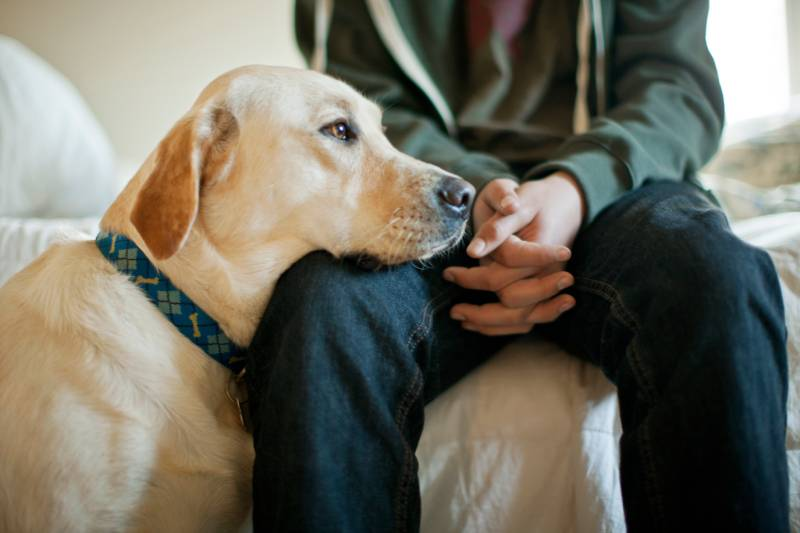AI in photojournalism is revolutionizing how we document and preserve visual history, offering both challenges and opportunities to an industry in flux. With concerns about authenticity and copyright at the forefront, leaders like Kira Pollack are exploring how artificial intelligence can safeguard the vast photography archives that tell our world’s stories. By leveraging cutting-edge technologies, photojournalists can enhance their workflows, making images more accessible and preserving their significance for future generations. As AI image preservation strategies evolve, they promise to redefine our relationship with photography and its historical narratives. The conversation around photojournalism and AI highlights the delicate balance between innovation and integrity in capturing truth.
Exploring the intersection of technology and visual storytelling, AI’s role in photography is becoming increasingly pivotal. Contemporary creators and journalists are now faced with the dual task of embracing advancements while ensuring the authenticity of the narratives they convey. The potential of artificial intelligence in preserving photography archives opens doors to new methods of curating and discovering visual content that might otherwise be lost. As we navigate this brave new world, it is crucial for professionals in the field to leverage these tools responsibly, maintaining a commitment to the core principles of journalism. This evolution in digital documentation signifies a transformative moment for the future of visual media.
The Impact of AI on Photojournalism
The rise of artificial intelligence in the field of photojournalism presents a paradoxical situation. On one hand, AI’s capacity to generate synthetic images poses a significant threat to the authenticity and credibility of visual storytelling. Concerns over copyright violations and the potential misuse of photographers’ work have become increasingly pressing in a landscape where digital images proliferate rapidly across social media platforms, often without proper context or attribution. This not only challenges the long-standing principles of trust and accuracy in journalism but also creates a landscape where audiences may struggle to distinguish between what is real and what is artificially created.
Conversely, as Kira Pollack suggests, there is potential for artificial intelligence to be harnessed as a tool for preservation and organization of photojournalistic archives. The crux of Pollack’s research lies in exploring how AI can help catalog images, making previously unseen visual records accessible while upholding ethical standards. By leveraging AI’s analytical capabilities, photojournalists can ensure that their work is not only preserved but also contextualized in a way that enhances public understanding of historical events. Thus, while AI introduces challenges, it also provides opportunities for photojournalism to adapt and thrive in the digital era.
Kira Pollack: Pioneering the Integration of AI
Kira Pollack’s work exemplifies the dynamic intersection between traditional photojournalism and contemporary technological advancements. With her background as a creative director and her leadership roles at prestigious publications, she brings firsthand experience in navigating the ever-evolving landscape of visual media. Pollack’s position as the Walter Shorenstein Media & Democracy Fellow allows her to delve into the specific challenges and ethical considerations that AI brings to photojournalism. By utilizing the archives of esteemed war photographer Christopher Morris, she aims to explore how AI can analyze and interpret complex images, providing deeper insights that can preserve the narrative integrity of photojournalism.
Pollack’s commitment to understanding AI’s ethical implications reflects a broader concern within the industry about the future of visual storytelling. Her approach is not merely about leveraging technology for efficiency but about respecting and amplifying the voices and stories behind the images. As she investigates how AI can be used responsibly, Pollack hopes to foster a dialogue about the core values of photojournalism, such as truth and authorship. This multifaceted examination may pave the way for a new era where AI supports and enhances the role of photojournalists rather than undermines it.
Preserving Photography Archives with AI
The preservation of photography archives has become a pressing concern for photojournalists and historians alike. Many significant works remain unseen, locked away in extensive collections that risk being forgotten over time. With approximately 95% of images captured by photojournalists never reaching the public eye, there’s a danger of losing critical visual narratives that document pivotal moments in history. Kira Pollack emphasizes the importance of viewing these archives not as static collections but as living, breathing entities that tell our shared stories.
AI offers innovative solutions to the challenge of archival preservation. By enabling advanced cataloging and contextualization of images, AI can help unlock these vast libraries of work, making them accessible for future generations. Pollack’s experiments with AI have demonstrated its potential to interpret images with depth and nuance, capturing the complexity of events like the U.S. invasion of Iraq. As technology advances, the integration of AI in photojournalism may serve not only to archive but also to enrich the storytelling aspect of these images, ensuring they retain their significance in a rapidly changing media landscape.
Ethical Considerations in AI Image Preservation
The integration of AI tools into photojournalism raises crucial ethical questions that must be addressed to maintain the integrity of the field. Among the most pressing concerns is the risk of unauthorized use of photographs, where AI systems might scrape and utilize images without the consent of their creators. This issue highlights the need for clear guidelines surrounding copyright and ownership, particularly as AI continues to evolve and become a more prevalent force in visual media. Pollack’s research aims to ensure that photojournalists’ rights are protected while exploring how AI can be an ally in cataloging and preserving their work.
Moreover, there is a broader conversation about the guiding principles of journalism, particularly regarding truth, trust, and authority in the digital age. As Kira Pollack explores the potential of AI to enhance photojournalism, she emphasizes that it is imperative to harness these technologies to reinforce, rather than undermine, the core values of the field. This approach requires ongoing dialogue among journalists, technologists, and ethicists to navigate the complexities of innovation while honoring the legacy and responsibility inherent in photojournalism.
AI’s Role in Enhancing Visual Storytelling
Artificial intelligence has the potential to revolutionize the way we approach visual storytelling, providing nuanced insights into historical moments captured through the lens of photojournalists. By dissecting various elements of an image, from composition to emotional context, AI can help enhance the narrative surrounding a photograph, enabling a deeper understanding of the story it conveys. Kira Pollack’s investigations into the use of AI for storytelling reaffirm the technology’s capacity to elevate the art of photojournalism while safeguarding the authenticity of the images.
Beyond mere categorization, AI can assist photojournalists in crafting a richer, more immersive narrative experience for viewers. By drawing connections between seemingly disparate images, AI can produce comprehensive narratives that contextualize visual history in a more meaningful way. This innovative use of AI serves to not only highlight the individual works of photojournalists like Christopher Morris but also to inspire a collective appreciation for the visual documentation of significant world events, ultimately breathing new life into the practice of photojournalism.
Navigating the Future of Visual Authenticity
The conversation surrounding AI in photojournalism is one that straddles the line between innovation and authenticity. With generative AI capable of creating hyper-realistic images, the risk of eroding public trust in visual media poses a formidable challenge for the industry. As Kira Pollack explores ways in which AI can bolster photography, the fundamental question remains: how do we preserve the credibility of images in a landscape increasingly filled with digital manipulations? This critical examination pushes photojournalists and technologists alike to reevaluate their commitments to truth and representation.
To navigate these complexities, it is essential that the photojournalism community fosters open dialogues about the implications of AI technology while also leveraging it as a tool for authenticity. Kira Pollack’s work exemplifies this very balance; by using AI to enrich and preserve archives of authentic photojournalism rather than compromise them, there’s a pathway to utilize technology to uphold the integrity of visual storytelling. Emphasizing transparency and ethical practices will be key as the industry continues to adapt to new technological frontiers.
The Future of Journalism in an AI-Driven World
As we look toward the future of journalism in an AI-driven world, it’s imperative to consider how traditional practices will evolve in tandem with emerging technologies. Photojournalists have historically played a crucial role in shaping public understanding through the lens of their cameras, capturing moments that define our culture and history. However, as tools become more sophisticated and capable of creating and distributing images without human intervention, the need for journalists to adapt is more critical than ever. Kira Pollack’s research highlights this shift, calling for an exploration into the potential of AI as a complementary force in journalism rather than a threat.
To ensure that journalism retains its foundational values—authenticity, accountability, and storytelling—it will be essential for professionals in the field to embrace new technologies while maintaining a commitment to ethical standards. Pollack’s insights reveal that AI can serve as a means to not only preserve but enhance our understanding of the past through the vast archives of photojournalism. As we navigate this emerging landscape, the dialogue between technology and journalism will shape the future of how stories are told, ultimately influencing the way societies engage with their visual histories.
Fostering Dialogues Across Disciplines
Kira Pollack’s experience at the Shorenstein Center brings together thought leaders from various disciplines to address the challenges at the convergence of technology and journalism. This multidisciplinary approach is vital as it encourages critical discourse on the implications of AI in photojournalism. Engaging with technologists, ethicists, and policymakers enables a richer examination of how AI can be utilized responsibly while tackling ethical dilemmas that may arise. The cross-disciplinary nature of this dialogue not only facilitates innovative solutions but also fosters a shared understanding of the diverse perspectives surrounding the integration of technology in visual storytelling.
By bridging the gaps between different fields, Pollack aims to ensure that photojournalism continues to thrive in a technology-driven era. Understanding the implications of generative AI on the visual landscape necessitates input from various contexts, from artistic vision to ethical concerns. This comprehensive exploration of AI’s role in photography can empower journalists to leverage these tools while remaining committed to the integrity of their craft. Ultimately, fostering dialogues across disciplines will play a crucial role in shaping the future of photojournalism as it adjusts to the realities of an increasingly AI-enhanced world.
Reinforcing the Importance of Authorship in Photography
As AI continues to shape the photography landscape, the conversation around authorship and intellectual property becomes increasingly significant. The potential for AI to generate images raises questions about who truly owns the rights to a photograph and how credit is attributed. With the risk of photographers’ works being used without consent to train AI models, it is essential to reinforce the importance of authorship in documentary photography. Pollack emphasizes that understanding the intent behind an image is crucial for preserving its narrative integrity, which is especially important in the age of misinformation.
In her work, Pollack aims to illuminate the voices of photographers and ensure their stories are not overshadowed by technological advancement. By exploring how AI can help preserve and highlight the contributions of individual photojournalists, she advocates for recognition of intellectual property rights. This effort not only safeguards the legacy of established photographers but also encourages emerging talent in a digital landscape increasingly dominated by automated image generation. Upholding the significance of authorship is paramount in maintaining the integrity of photojournalism as we adapt to modern advancements.
Frequently Asked Questions
How is artificial intelligence impacting photojournalism today?
Artificial intelligence is both a threat and an opportunity for photojournalism. While it poses risks such as copyright violations and the creation of synthetic images that blur the line between reality and fabrication, it also offers tools for preserving and organizing vast photojournalism archives. Innovations in AI can help photojournalists like Kira Pollack catalog, contextualize, and safeguard their photographic work, ensuring that vital visual histories are maintained.
What role does Kira Pollack believe AI can play in preserving photography archives?
Kira Pollack believes that AI can significantly contribute to the preservation of photography archives by helping to catalog and organize images in a way that makes them more accessible and discoverable. Through her research, she explores how AI can provide detailed insights into the narratives behind photographs, ensuring that the deep storytelling inherent in photojournalism is kept alive. This approach aims to protect the integrity of these important visual records while combatting the potential harms of AI misuse.
What challenges does AI in photojournalism need to address regarding trust and authenticity?
The introduction of AI in photojournalism raises concerns about trust and authenticity, particularly as generative AI can create highly realistic images that may mislead audiences. Photojournalism faces the challenge of maintaining public trust amid a flood of altered visuals. It’s crucial to leverage AI responsibly to preserve and organize genuine photojournalism rather than generating or exploiting images. This balance is essential to ensuring that visual truths remain at the forefront of the narrative and historical record.
Can AI help mitigate the erosion of trust in photojournalism due to synthetic images?
Yes, AI can help mitigate the erosion of trust in photojournalism by focusing on the preservation and organization of real images rather than creating synthetic ones. By utilizing AI to catalog historical photographs and provide context, the authenticity of photojournalism can be reinforced. This approach encourages transparency and helps to maintain the integrity of visual storytelling, offering audiences reliable historical records amidst rising concerns about image authenticity.
How can photojournalists ethically use AI in their work?
Photojournalists can ethically use AI by ensuring that it serves to enhance the preservation and understanding of real images rather than generating new, potentially misleading content. This involves using AI tools to catalog and contextualize archives while safeguarding photographers’ rights and ensuring proper consent for any images used in AI training. By prioritizing these ethical considerations, photojournalists can harness AI’s capabilities to strengthen the documentation of substantial visual histories.
What is the significance of Kira Pollack’s research on AI and photography?
Kira Pollack’s research on AI and photography is significant because it seeks to explore how artificial intelligence can support the preservation of vital visual histories captured by photojournalists. Her work addresses the urgent need to protect vast photographic archives from the threats posed by AI technology while simultaneously seeking innovative ways to enhance their discoverability. By engaging with a multidisciplinary dialogue around AI, she aims to inform best practices for the future of photojournalism.
What outcomes does Kira Pollack hope to achieve through her work with the Shorenstein Fellowship?
Through her work with the Shorenstein Fellowship, Kira Pollack aims to deeply examine the implications of AI on photography and journalism. She hopes to foster discussions among technologists, journalists, and ethicists to ensure that the core values of photojournalism—truth, authorship, and memory—are preserved as technology evolves. Ultimately, her goal is to translate insights gained into practical strategies that benefit the broader photojournalism community, helping professionals navigate the changing landscape.
| Key Points |
|---|
| AI’s duality: Threatens photojournalism through copyright issues and trust erosion; potential to preserve photographic archives. |
| Kira Pollack, a notable visual storyteller, sees AI as a tool for protecting the visual history of photojournalism at the Shorenstein Center. |
| Pollack’s research focuses on leveraging AI to catalog and contextualize thousands of unpublished images from photojournalists. |
| AI has demonstrated the ability to analyze complex conflict imagery, providing nuanced insights that help preserve context and emotion. |
| An ongoing challenge is balancing AI’s benefits with the erosion of trust and copyright concerns within the industry. |
| Through her fellowship, Pollack aims to navigate the intersection of technology, journalism, and visual storytelling. |
Summary
AI in photojournalism presents both significant challenges and promising opportunities. While it threatens the integrity of the field through risks like copyright infringement and the creation of deepfakes that blur reality, it also holds the potential to preserve the rich visual history captured by photojournalists. Kira Pollack’s innovative work at the Shorenstein Center emphasizes utilizing AI not as a means of generating or distorting images, but rather as a powerful tool for cataloging and contextualizing the invaluable archives of professional photographers. By harnessing AI, Pollack aims to ensure that authentic photojournalism remains accessible and recognized, helping to secure the legacy and integrity of visual storytelling in an increasingly complex media landscape.



